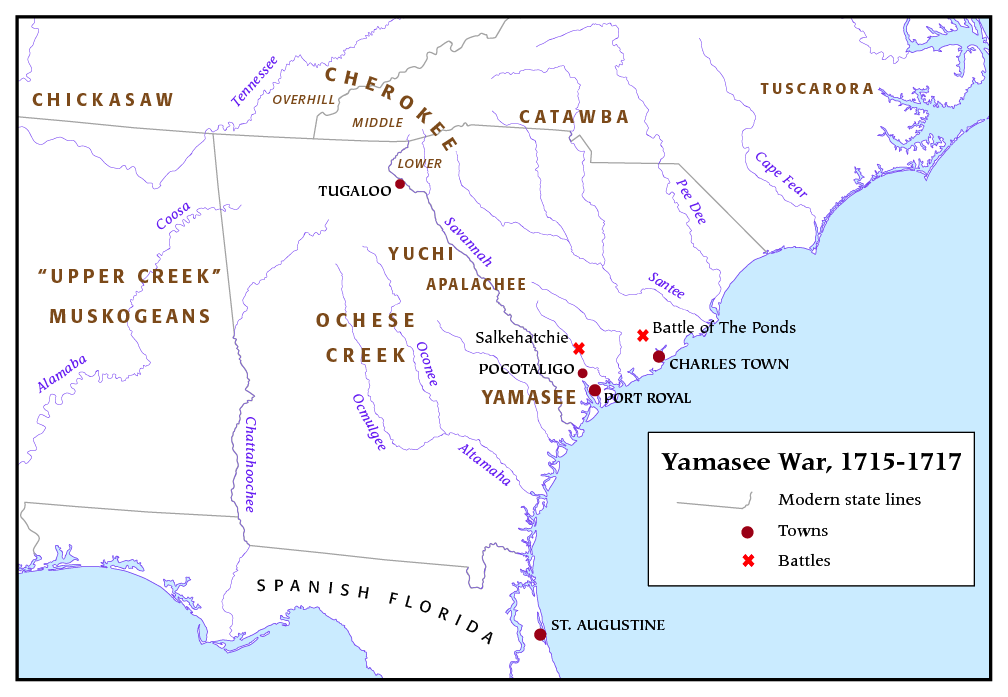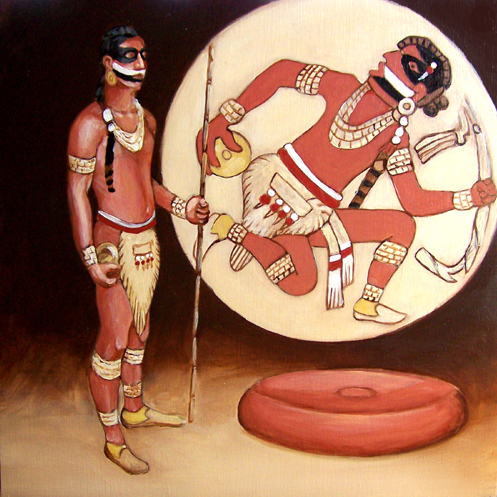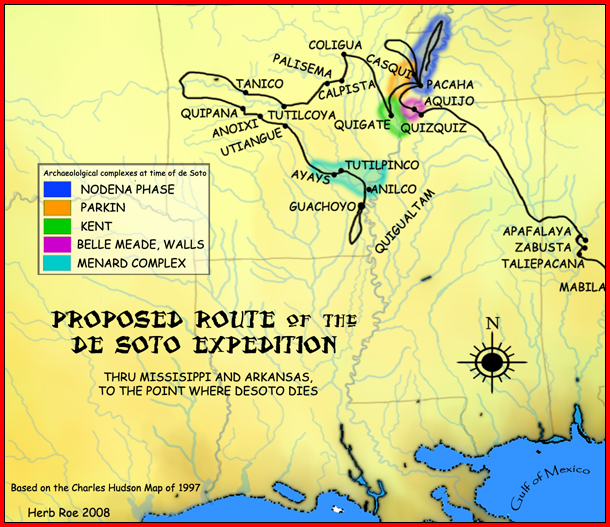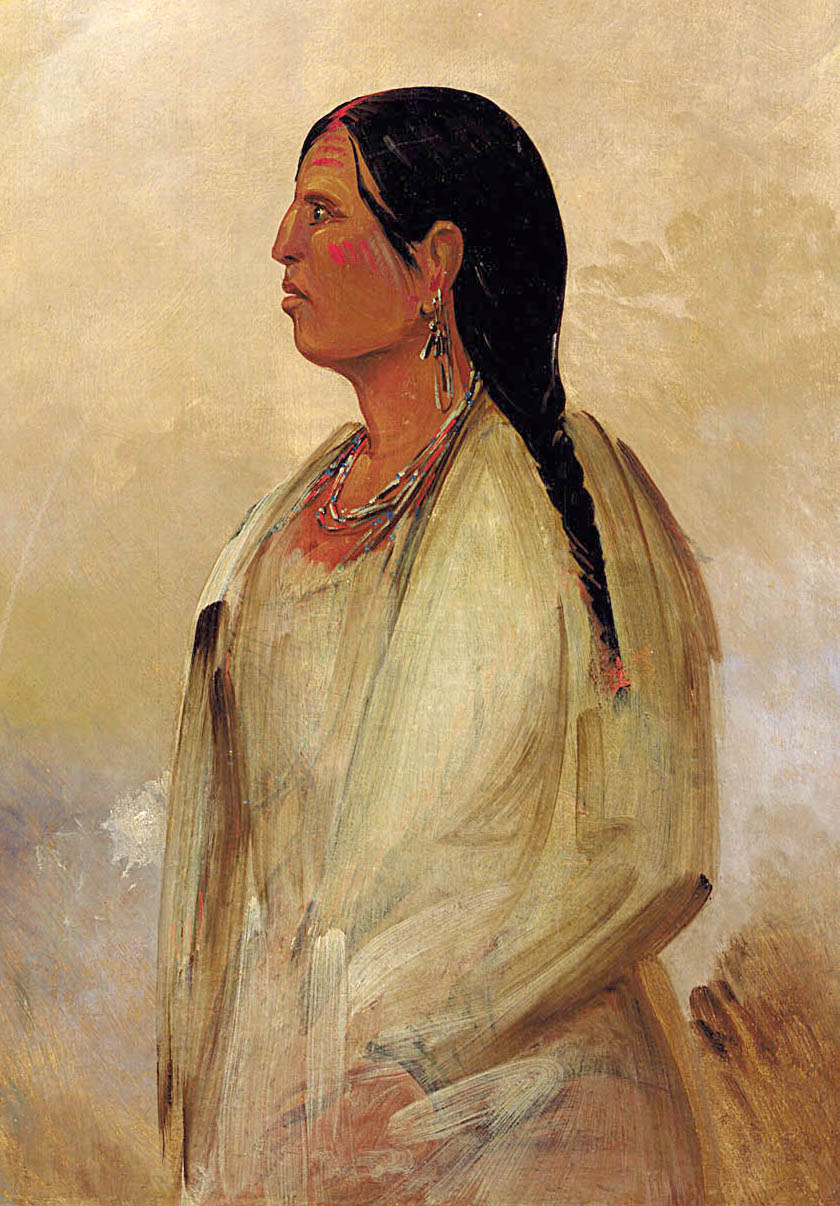|
Shakori Tribe
The Shakori were an indigenous people of the Southeastern Woodlands. They were thought to be a Siouan people, closely allied with other nearby tribes such as the Eno and the Sissipahaw. As their name is also recorded as Shaccoree, they can be confused with the Sugaree, but the latter are Catawba people. Yardley in 1654 wrote about a Tuscarora guide's accounts of the ''Cacores'' people from ''Haynoke'' who, although smaller in stature and number, were able to evade the Tuscarora. Their villages were located around what is now Hillsborough, North Carolina along the banks of the Eno and Shocco rivers. Culture Although little is known about the Shakori, at the time of contact, they were not noted as being noticeably different from the surrounding tribes. They made their wigwams and other structures out of interwoven saplings and sticks; these were covered in mud as opposed to the bark typically used by other nearby tribes. They were described as being similar to traditional dwell ... [...More Info...] [...Related Items...] OR: [Wikipedia] [Google] [Baidu] |
Eno River
The Eno River, named for the Eno Native Americans who once lived along its banks, is the initial tributary of the Neuse River in North Carolina, United States. Descendants of European immigrants settled along the Eno River in the latter 1740s and early 1750s, including many Quakers from Pennsylvania. Several years after the 1752 creation of Orange County, the Orange County Court of Common Pleas & Quarter Sessions selected a site along the Eno River near the homes of James Watson and William Reed as the county seat, originally naming it ''Corbin Town'', or ''Corbinton,'' after Francis Corbin, agent and attorney to John, Earl Granville. The Court met at James Watson's home along the Eno River from 1754 through 1756, when the courthouse at Corbinton was completed. In 1759, officials changed the county seat's name from ''Corbinton'' to ''Childsburg,'' after another of Earl Granville's agents, Thomas Child. Finally, in 1766, officials changed the name to '' Hillsborough.'' The Eno ri ... [...More Info...] [...Related Items...] OR: [Wikipedia] [Google] [Baidu] |
Arkansas
Arkansas ( ) is a landlocked state in the South Central United States. It is bordered by Missouri to the north, Tennessee and Mississippi to the east, Louisiana to the south, and Texas and Oklahoma to the west. Its name is from the Osage language, a Dhegiha Siouan language, and referred to their relatives, the Quapaw people. The state's diverse geography ranges from the mountainous regions of the Ozark and Ouachita Mountains, which make up the U.S. Interior Highlands, to the densely forested land in the south known as the Arkansas Timberlands, to the eastern lowlands along the Mississippi River and the Arkansas Delta. Arkansas is the 29th largest by area and the 34th most populous state, with a population of just over 3 million at the 2020 census. The capital and most populous city is Little Rock, in the central part of the state, a hub for transportation, business, culture, and government. The northwestern corner of the state, including the Fayetteville–Springdaleâ ... [...More Info...] [...Related Items...] OR: [Wikipedia] [Google] [Baidu] |
Siouan Peoples
Siouan or Siouan–Catawban is a language family of North America that is located primarily in the Great Plains, Ohio and Mississippi valleys and southeastern North America with a few other languages in the east. Name Authors who call the entire family ''Siouan'' distinguish the two branches as '' Western Siouan'' and '' Eastern Siouan'' or as ''Siouan-proper'' and ''Catawban''. Others restrict the name "Siouan" to the western branch and use the name ''Siouan–Catawban'' for the entire family. Generally, however, the name "Siouan" is used without distinction. Family division Siouan languages can be grouped into the Western Siouan languages and Catawban languages. The Western Siouan languages can be divided into Missouri River languages (such as Crow and Hidatsa), Mandan, Mississippi River languages (such as Dakotan, Chiwere- Winnebago, and Dhegihan languages), and Ohio Valley Siouan branches. The Catawban languages consist only of Catawban and Woccon. Proto-Siouan Previou ... [...More Info...] [...Related Items...] OR: [Wikipedia] [Google] [Baidu] |
Extinct Native American Peoples
Extinction is the termination of a kind of organism or of a group of kinds (taxon), usually a species. The moment of extinction is generally considered to be the death of the last individual of the species, although the capacity to breed and recover may have been lost before this point. Because a species' potential range may be very large, determining this moment is difficult, and is usually done retrospectively. This difficulty leads to phenomena such as Lazarus taxa, where a species presumed extinct abruptly "reappears" (typically in the fossil record) after a period of apparent absence. More than 99% of all species that ever lived on Earth, amounting to over five billion species, are estimated to have died out. It is estimated that there are currently around 8.7 million species of eukaryote globally, and possibly many times more if microorganisms, like bacteria, are included. Notable extinct animal species include non-avian dinosaurs, saber-toothed cats, dodos, mam ... [...More Info...] [...Related Items...] OR: [Wikipedia] [Google] [Baidu] |
Catawba (tribe)
The Catawba, also known as Issa, Essa or Iswä but most commonly ''Iswa'' (Catawba: '' Ye Iswąˀ'' – "people of the river"), are a federally recognized tribe of Native Americans, known as the Catawba Indian Nation. Their current lands are in South Carolina, on the Catawba River, near the city of Rock Hill. Their territory once extended into North Carolina, as well, and they still have legal claim to some parcels of land in that state. They were once considered one of the most powerful Southeastern tribes in the Carolina Piedmont, as well as one of the most powerful tribes in the South as a whole, with other, smaller tribes merging into the Catawba as their post-contact numbers dwindled due to the effects of colonization on the region. The Catawba were among the East Coast tribes who made selective alliances with some of the early European colonists, when these colonists agreed to help them in their ongoing conflicts with other tribes. These were primarily the tribes of ... [...More Info...] [...Related Items...] OR: [Wikipedia] [Google] [Baidu] |
Haliwa-Saponi
The Haliwa-Saponi Indian Tribe, also the Haliwa-Saponi Tribe, is a state-recognized tribe and nonprofit organization in North Carolina. They are not a federally recognized as a Native American tribe. They are headquartered in Hollister, North Carolina. Formerly named the Haliwarnash Indian Club, they adopted their current form of government in 1953 and were recognized in 1965 by the state of North Carolina. The tribe has created schools and other institutions to preserve its culture and identity. They primarily belong to Protestant Christian churches, mostly Baptist and Methodist. Name The name ''Haliwa'' is a portmanteau from the two counties: Halifax and Warren. In 1979 the tribe added ''Saponi'' to their name to reflect their descent from the historical Saponi peoples, part of the large Siouan languages family, who were formerly located in the Piedmont of present-day Virginia and the Carolinas. Membership The Haliwa-Saponi comprise slightly more than 3,800 memb ... [...More Info...] [...Related Items...] OR: [Wikipedia] [Google] [Baidu] |
Saponi
The Saponi or Sappony are a Native American tribe historically based in the Piedmont of North Carolina and Virginia.Raymond D. DeMaillie, "Tutelo and Neighboring Groups," pages 286–87. They spoke a Siouan language, related to the languages of the Tutelo, Biloxi, and Ofo. Since the mid-20th century, certain groups in the Southeast have organized to assert their American Indian cultural identity; some claim descent from the historic Saponi. Three state-recognized tribes in North Carolina, the Haliwa-Saponi Indian Tribe, the Occaneechi Band of the Saponi Nation, and the Sappony (formerly known as the Indians of Person County until 2003) all identify as Saponi. None of these organizations are federally recognized as a Native American tribe. Etymology The origin and meaning of ''Saponi'' is debated. Ethnographer James Mooney suggested the word might come from the Siouan term ''sapa'' meaning "black." German explorer John Lederer suggested their name came from Sepy, a female immo ... [...More Info...] [...Related Items...] OR: [Wikipedia] [Google] [Baidu] |
Yamasee War
The Yamasee War (also spelled Yamassee or Yemassee) was a conflict fought in South Carolina from 1715 to 1717 between British settlers from the Province of Carolina and the Yamasee and a number of other allied Native American peoples, including the Muscogee, Cherokee, Catawba, Apalachee, Apalachicola, Yuchi, Savannah River Shawnee, Congaree, Waxhaw, Pee Dee, Cape Fear, Cheraw, and others. Some of the Native American groups played a minor role, while others launched attacks throughout South Carolina in an attempt to destroy the colony. Native Americans killed hundreds of colonists and destroyed many settlements, and they killed traders throughout the southeastern region. Colonists abandoned the frontiers and fled to Charles Town, where starvation set in as supplies ran low. The survival of the South Carolina colony was in question during 1715. The tide turned in early 1716 when the Cherokee sided with the colonists against the Creek, their traditional enemy. The last Nat ... [...More Info...] [...Related Items...] OR: [Wikipedia] [Google] [Baidu] |
Siouan Language
Siouan or Siouan–Catawban is a language family of North America that is located primarily in the Great Plains, Ohio and Mississippi valleys and southeastern North America with a few other languages in the east. Name Authors who call the entire family ''Siouan'' distinguish the two branches as '' Western Siouan'' and '' Eastern Siouan'' or as ''Siouan-proper'' and ''Catawban''. Others restrict the name "Siouan" to the western branch and use the name ''Siouan–Catawban'' for the entire family. Generally, however, the name "Siouan" is used without distinction. Family division Siouan languages can be grouped into the Western Siouan languages and Catawban languages. The Western Siouan languages can be divided into Missouri River languages (such as Crow and Hidatsa), Mandan, Mississippi River languages (such as Dakotan, Chiwere- Winnebago, and Dhegihan languages), and Ohio Valley Siouan branches. The Catawban languages consist only of Catawban and Woccon. Proto-Siouan Previous ... [...More Info...] [...Related Items...] OR: [Wikipedia] [Google] [Baidu] |
Chunkey
Chunkey (also known as chunky, chenco, tchung-kee or the hoop and stick game ) is a game of Native American origin. It was played by rolling disc-shaped stones across the ground and throwing spears at them in an attempt to land the spear as close to the stopped stone as possible. It originated around 600 CE in the Cahokia region of what is now the United States (near modern St. Louis, Missouri). Chunkey was played in huge arenas as large as 47 acres (19 ha) that housed great audiences designed to bring people of the region together (i.e. Cahokians, farmers, immigrants, and even visitors). It continued to be played after the fall of the Mississippian culture around 1500 CE. Variations were played throughout North America. Early ethnographer James Adair translated the name to mean "running hard labor". Gambling was frequently connected with the game, with some players wagering everything they owned on the outcome of the game. Losers were even known to commit suicide. Graphic re ... [...More Info...] [...Related Items...] OR: [Wikipedia] [Google] [Baidu] |
Quapaw
The Quapaw ( ; or Arkansas and Ugahxpa) people are a tribe of Native Americans that coalesced in what is known as the Midwest and Ohio Valley of the present-day United States. The Dhegiha Siouan-speaking tribe historically migrated from the Ohio Valley area to the west side of the Mississippi River in what is now the state of Arkansas; their name for themselves (or autonym) refers to this migration and to traveling downriver. The Quapaw are federally recognized as the Quapaw Nation. The US federal government forcibly removed them to Indian Territory in 1834, and their tribal base has been in present-day Ottawa County in northeastern Oklahoma. The number of members enrolled in the tribe was 3,240 in 2011. Name Algonquian-speaking people called the Quapaw ''akansa''. French explorers and colonists learned this term from Algonquians and adapted it in French as ''Arcansas''. The French named the Arkansas River and the territory of Arkansas for them. Government The Quapaw Natio ... [...More Info...] [...Related Items...] OR: [Wikipedia] [Google] [Baidu] |
Indigenous People Of The Southeastern Woodlands
Indigenous peoples of the Southeastern Woodlands, Southeastern cultures, or Southeast Indians are an ethnographic classification for Native Americans who have traditionally inhabited the area now part of the Southeastern United States and the northeastern border of Mexico, that share common cultural traits. This classification is a part of the Eastern Woodlands. The concept of a southeastern cultural region was developed by anthropologists, beginning with Otis Mason and Frank Boas in 1887. The boundaries of the region are defined more by shared cultural traits than by geographic distinctions.Jackson and Fogelson 3 Because the cultures gradually instead of abruptly shift into Plains, Prairie, or Northeastern Woodlands cultures, scholars do not always agree on the exact limits of the Southeastern Woodland culture region. Shawnee, Powhatan, Waco, Tawakoni, Tonkawa, Karankawa, Quapaw, and Mosopelea are usually seen as marginally southeastern and their traditional lands represent th ... [...More Info...] [...Related Items...] OR: [Wikipedia] [Google] [Baidu] |


.jpg)




